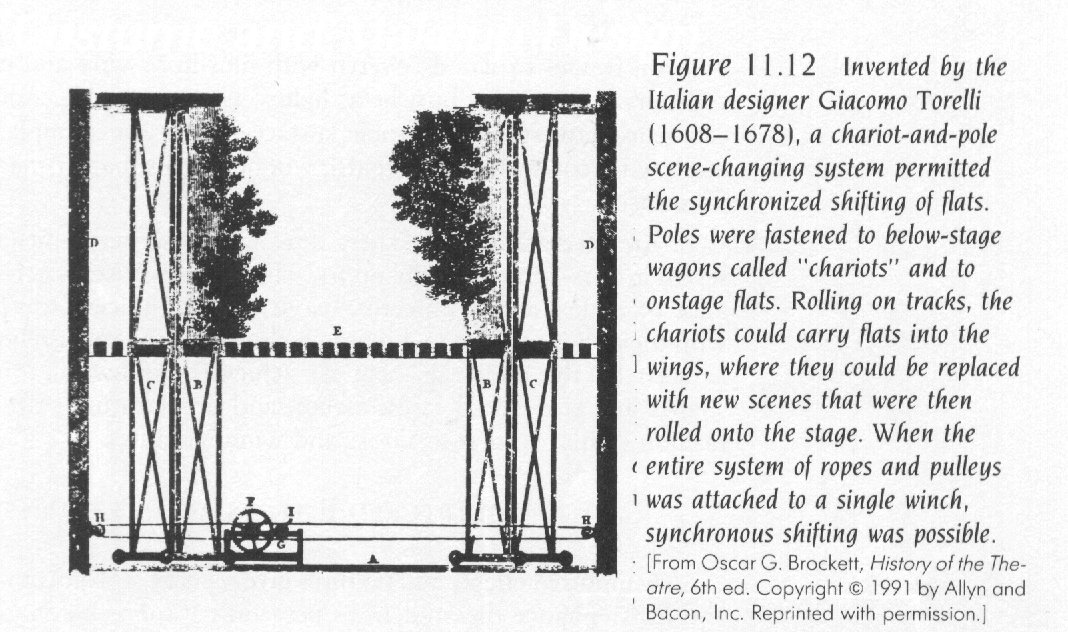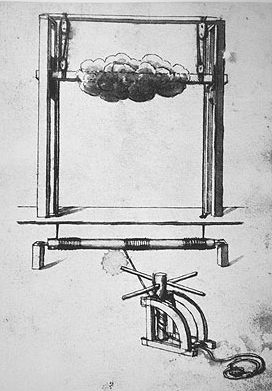Imagine walking into a crowded area, the smells of unwashed laborers and meat pasties in the air while spectators jostle and push for a good position on the packed dirt arena floor. Above them, the sky is bright blue, a few fluffy clouds drift over lazily. Richer folk are seated under cover, the most expensive seats being on the third level. Seat cushions are extra. In front of the groundlings, a two-story platform is set up, the top story also sporting a thatched roof. The columns are painted dazzling colors while the upper story is painted to look like the sky and the lower platform designed like the interior of a castle. A curtain hangs across a back entrance and a trap door provided exits into Hell from center stage. It can also be a grave. A player steps out from the curtains and the crowds hush as he begins to speak. “Now is the winter of our discontent made glorious summer by this son of York.1” Spell-bound, the audience made of rough workmen, privileged merchants, and a few nobles watches the drama played out with minimal props and hardly any scenery. The actors’ words paint the pictures, a better backdrop than any sketched out, and men flock to experience this new technology. The stage, the trapdoor and curtains, even the building itself are all something new to the dramatic world: a theater.
 |
| The Globe Theater |
The first stage in England was The Theater, built in 1576.1 It was a simple affair, round with audience seating running from stage left to stage right and room for people on the ground in front of and to the sides of the stage. Soon Shakespeare's famous Globe Theater would be built. These people, ground-lings, were commoners who paid a small sum to go to the theater. Richer people paid more for seats and extra for cushions. Before theaters, the medievals put on plays in inn yards and town centers. Nobles would have plays put on in their grand halls and at times plays were performed on elaborate moving wagons. Miracle plays were the first plays to be performed in England, telling and embellishing stories from the Bible. Gunpowder was used in these make-shift playhouses, usually to signify the entrance of the Devil. Some actors were clever enough to rig up the gunpowder to costumes, making flames shoot out from the devil.1
As drama moved into theaters, more could be done with effects, though actors had to be careful with fire: the buildings were made of wood with thatched roofs. By this time, ancient Greek and Roman literature was popular and used to teach students grammar. People took the plans for theaters referenced in ancient writings and build their own, including a stage, wings, doors for entering and exiting, something of a proscenium, and trap doors. Players still relied on the sun for light so shows took place mid-day. Theater again met opposition from the church and constant closures due to plague and clergy meant theater did not have much time to develop new technologies. Still, medieval theaters got actors back onto stages and opened up a world of possibilities.
In the late 1500’s, Italy was developing actual theaters, where plays and operas were staged. A world-wide popular scenery shifting technique was created in 1641 by Giacomo Torelli, the chariot and pole system.2 This system used poles attached to scenery beneath the stage that were moved along a track with chariots.3 With Italy’s stage advances, Opera soon grew more appealing to the masses. What had been reserved for high society became a popular spectacle with technology.4
 |
| Chariot and Pole Scenery Moving |
 |
| Sabbattini's Cloud Machine |
Joseph Furttenbach and Nicola Sabbattini were set designers and theater inventors of the Renaissance. Between the two, they developed sliding waves, column waves, and upstanding waves for sea scenes; Sabbattini worked on a cloud flying machine and a thunder machine.5 Sabbattinis also worked extensively on lighting, developing techniques like dimming mechanisms to make the entire stage dark, spotlights, and scripting lighting changes to go with the show.6
Theater technology and techniques improved through the 17th and 18th centuries, employing electriciy and steam and machine to achieve magic all over the world. Theaters shared and stole technology from one another and developers took their techniques the theaters around the Continent, to England and even to America in the early 1800’s. Disrupted by wars, religious uprisings, and economic woes, theaters fought to stay open and thrive before the next crisis hit. Still they managed to develop complicated lighting, from fire-based lights to electric footlights, to hanging lights. Scenery moved by pipes and chariots became painting drops moves by complicated pulley systems. Curtains could swish in and out, changing scenes had never been so easy. Sound relied on good acoustics, not microphones, and tricks involved mirrors and smoke. Theater grew tame in experimenting with technology and stuck to what worked. 7 Then Computers came.
1 Thomas Fairman Ordish, Early London Theatres: In the Fields, (London: Elliot Stock, 1899), 38.
2 Scott R. Robinson, “Italian Theatre and Drama,” Scott R. Robinson, http://www.cwu.edu/~robinsos/ppages/resources/Theatre_History/Theahis_5.html (accessed July 20, 2011).
3Melanie Blood, “SET DESIGNER PART 2,” Melanie Blood’s Homepage for Course Material, http://www.geneseo.edu/~blood/SetDesign2.html. (accessed July 20, 2011).
4 Henry Harvey, “Technology in Theater,” Henry Harvey Thesis, http://www.henryharvey.com/technotheater.html (accessed July 18, 2011).
5Department of Theatre & Dance, “Early Illusionistic [16th Century],” The Development of Scene Spectacle: A Site Devoted to the Study of Renaissance and Baroque Theatrical Spectacle, http://www1.appstate.edu/orgs/spectacle/Pages/16thscenechange.html, (accessed July 20, 2011).
6Department of Theatre & Dance, “Early Illusionistic Scene Change,” The Development of Scene Spectacle: A Site Devoted to the Study of Renaissance and Baroque Theatrical Spectacle, http://www1.appstate.edu/orgs/spectacle/Pages/16thscenechange.html#SabbattiniPeriaktoiEqui, (accessed July 20, 2011).
7 Henry Harvey, “Technology in Theater,” Henry Harvey Thesis, http://www.henryharvey.com/technotheater.html (accessed July 18, 2011).
Photo Credits:
Chariot and Pole: http://novaonline.nvcc.edu/eli/spd130et/TheaApp/char&pole.htm
Cloud Machine: http://en.wikipedia.org/wiki/Nicola_Sabbatini
Cloud Machine: http://en.wikipedia.org/wiki/Nicola_Sabbatini
No comments:
Post a Comment